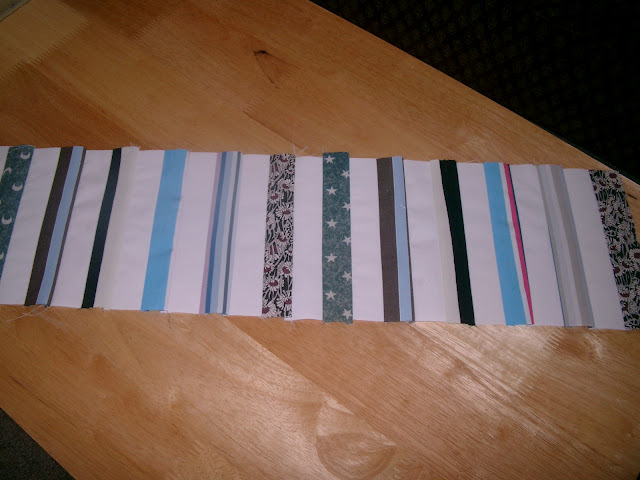Now I like a bargain but I like free even more. I found this duvet cover discarded. It was dusty and coffee stained but 100% cotton and a nice close weave at that. I took it in and gave it a soak in the bath and then a good hot wash and it came up a treat. There is one tiny hole (a fag burn?) near a corner of one side of it I suppose it got chucked because of the coffee stain. Having got it clean I thought it would be great to use as a muslin for a shirt or dressing gown but now I have decided I am going to use some of it to back the log-cabin quilt.
I spread the duvet cover (inside out) on the sitting room floor and got out the trusty Fiskers. I figured that if I trimmed away the overlocked seams I would be left with two nice large pieces of fabric.
I trimmed as close the the line of overlock stitching as I could so as to make the most of the fabric. I selected the side of the duvet cover that doesn't have the hole to back the quilt and cut it down to 48 inches by 62 inches that allows for a three inch margin around the finished quilt top. I will use the off-cuts to play with getting the tension right for straight-line quilting on the 401G.
I then pulled out the left over wadding I was planning to use from my stash and discovered that even if I cut and joined what I had it would be about 25% less than I need. I knew my luck would run out somewhere along the line. Oh well shops tomorrow or the next day.




































